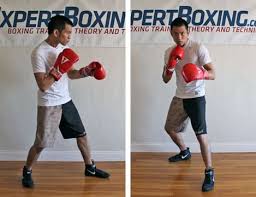
Boxing Stance
Image: expertboxing.com
A dedicated Pilates practitioner, Nanci Perle Kushner is the former owner of NPK Pilates of Cresskill, New Jersey. Nanci Kushner is also an avid tennis player and enjoys boxing when time allows.
One of the most important processes for the beginner boxer is the development of a basic stance. A good stance will allow you to punch with strength but will also give you the stability necessary for an effective defense. You should be able to stand firm in both situations, while still being mobile enough to evade a punch or move after an opponent.
Because your feet play a key role in developing this level of versatility, experts recommend that you begin developing your stance by learning correct alignment of the toe and heel. Ideally, your feet will be shoulder-width apart, and your forward toe should be on a line with your back heel. Toes should be nearly parallel on the diagonal, which gives your body a slight angle and allows you to defend without being overly exposed.
Your weight should be distributed evenly on both feet, and the knees should be bent. Your back foot should be on the same side of the body as your dominant hand, though both hands should be up and elbows down in a preparatory position. Each of your movements should bring you back to this position, so that you can be ready for the next.


You must be logged in to post a comment.